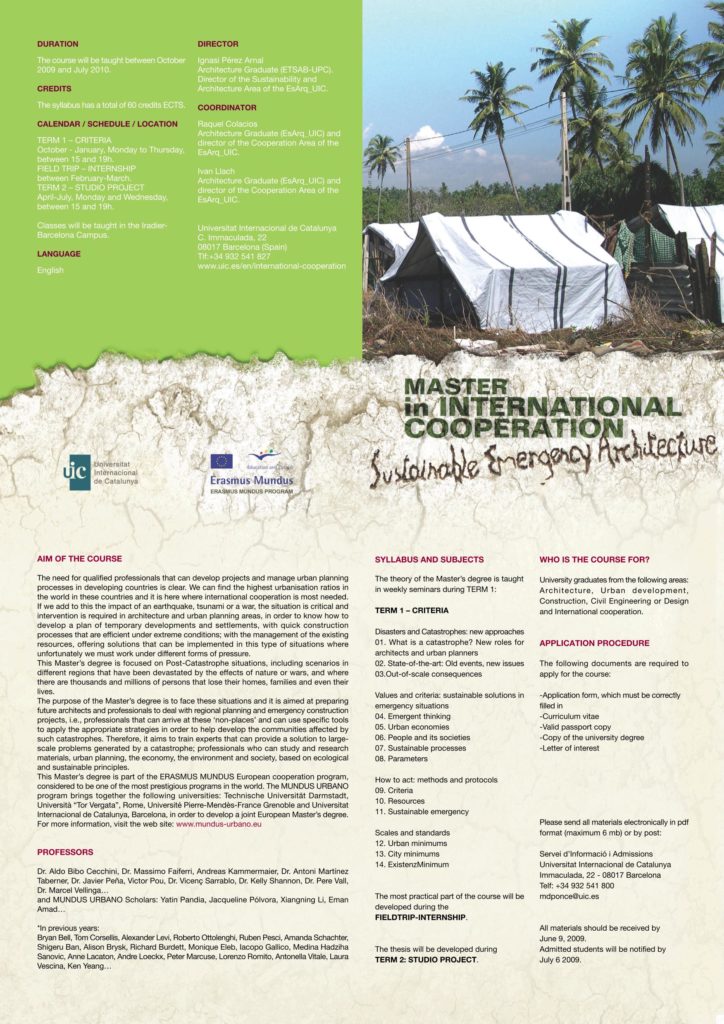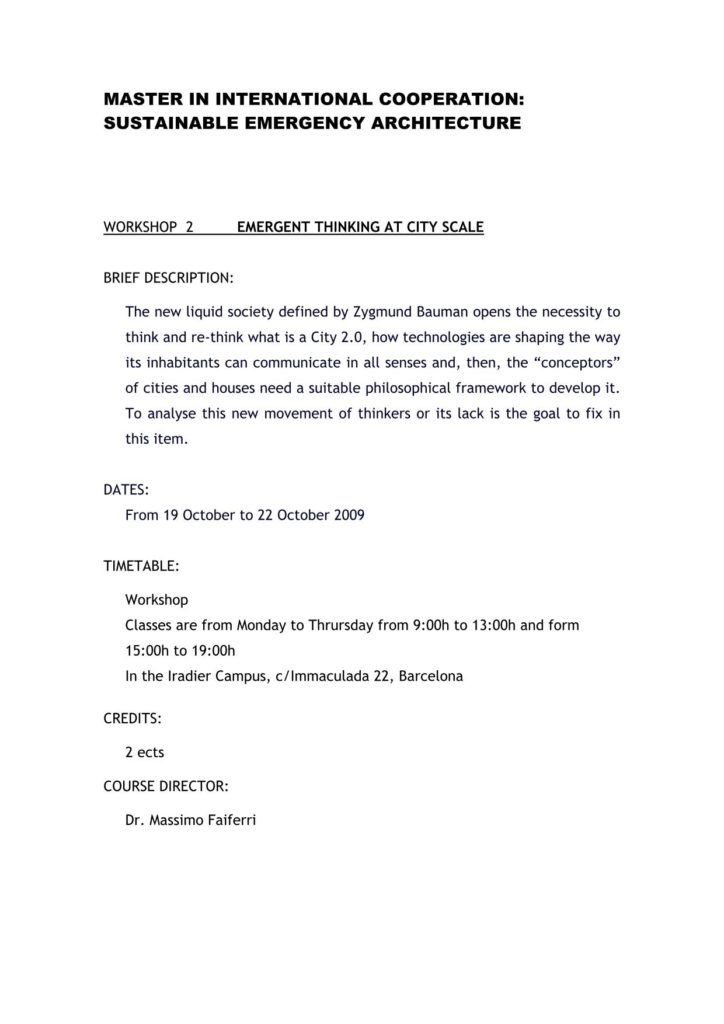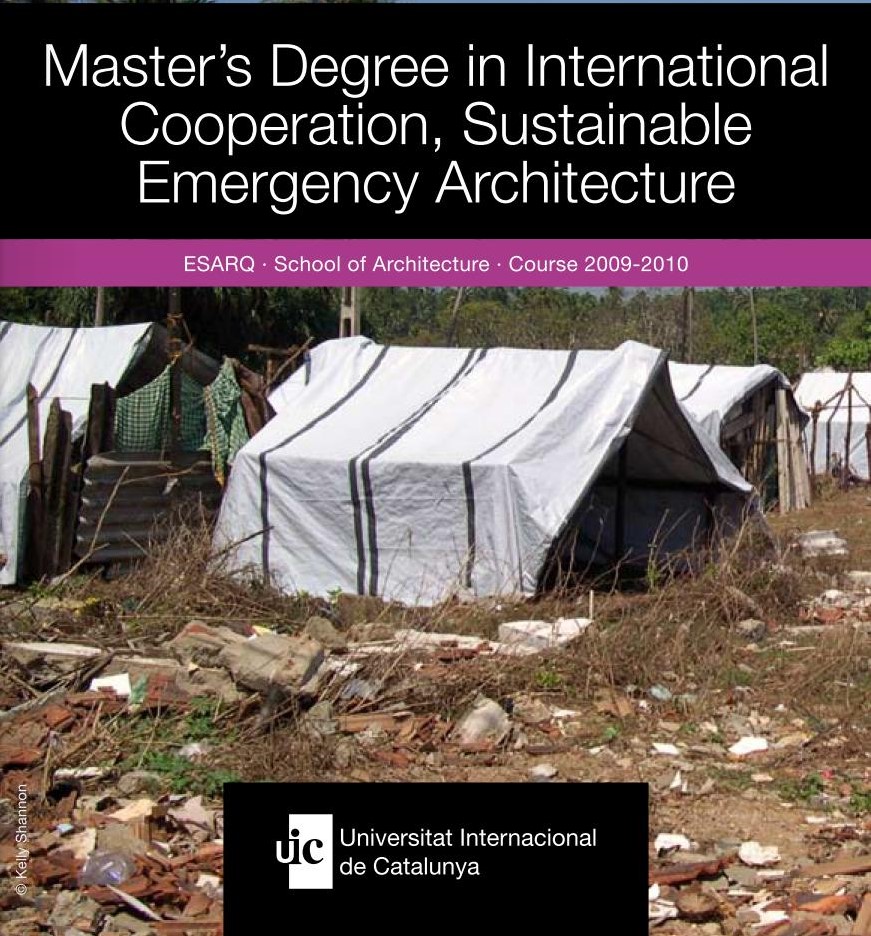Universitat Internacional de Catalunya
From 19 October to 22 October 2009
WORKSHOP 2 EMERGENT THINKING AT CITY SCALE
COURSE DIRECTOR:
Dr. Massimo Faiferri
TO INHABIT THE EMERGENCY
Contemporary design strategies to inhabit the Third Millennium
According to reliable data coming from different both governamental and non-governamental organisations, in the world there are more than one thousand millions people who live in precarious situations, to whom the house still represents a primary need. Therefore, it seems absolutely necessary to put again the theme of “inhabitance” at the top of the list of problems related to the building of the house in the Third Millennium, as a right of everyone in order to benefit( to make use of) by a shelter, a refuge, a house, as it is sanctioned in the Declaration of the Rights of Man in 1948. Wherever we look we see dangers for our survival and wellbeing ,while the spreading of means of information , linked to the growing of education, let us be more aware of uncertainties and risks we run. During the last years, thanks also to the phenomenon turned into spectacle by media through news linked to the recent damages that hit the planet, the interest toward the theme of emergency dwelling, has grown exponentially as it is testified by the excessive number of exhibitions, competitions and enterprises. Even if some of these themes have already been a heated matter after the postwar period, if we look at the today’s “Slum Planet” described by Mike Davis, we perceive some new aspects caused by the global process of urbanisation that is assailing most of the worldwide population where, to face them, a one way answer seems to be inadequate. In this way, it seems to be appropriate a new reflection open on the theme of the house, where the widening of the concept of “emergency” to all those pockets of uneasiness or of exceptionality found even in well developed countries, reminds us that, even our society is not homogeneous (well-blended), in which the access to the fruition and the availability to the consumption are not acquired data but rather fight terms among social classes and where it is more and more urgent the need to give back to the man a dignity, indissolubly linked to the idea of the house. The theme of inhabitance, the emergency today is therefore seen as a more general reflection on thedwelling in the attempt to try to put not justmodels of houses but a series of “ideas of housing” to compare with and even to satisfy a list of needs and necessities that are still disregarded.


